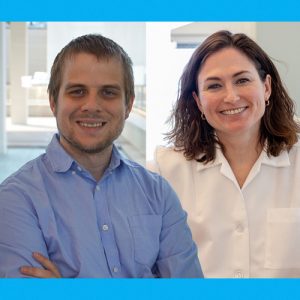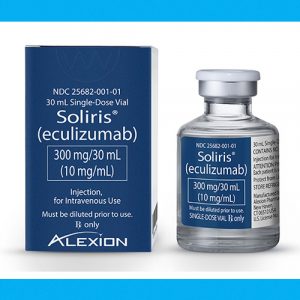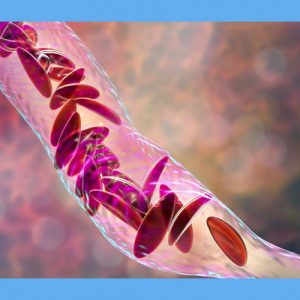
News from Technology Ventures at OMRF
with Dr. Andrew Westmuckett
A host of eye disorders occur when blood vessels grow out of control in the retina, the tissue that lines the back of the eye. In these disorders, which include diabetic retinopathy, a web of abnormal vessels blocks light from reaching the retina. The overgrowth causes vision issues that can advance to total blindness.
 At the Oklahoma Medical Research Foundation, Drs. Courtney Griffin and Chris Schafer thought there might be clues to diabetic retinopathy in vessels that naturally regress and disappear in mice soon after birth. In experiments, the OMRF researchers found that the levels of specific cellular proteins were downregulated in this normal vessel regression. Even more encouraging, Griffin and Schafer identified an experimental compound that inhibits these protein activities. It impacted only abnormal blood vessels with slow blood flow; the normal vessels needed in a healthy eye were spared.
At the Oklahoma Medical Research Foundation, Drs. Courtney Griffin and Chris Schafer thought there might be clues to diabetic retinopathy in vessels that naturally regress and disappear in mice soon after birth. In experiments, the OMRF researchers found that the levels of specific cellular proteins were downregulated in this normal vessel regression. Even more encouraging, Griffin and Schafer identified an experimental compound that inhibits these protein activities. It impacted only abnormal blood vessels with slow blood flow; the normal vessels needed in a healthy eye were spared.
The findings, which appeared in October in the Proceedings of the National Academy of Sciences (and are the subject of a pending provisional patent application), open the door to tailored therapies to reverse vision loss. They could also have implications in shrinking tumors that contain abnormal blood vessels in other parts of the body.
This eye-opening discovery (sorry) was just one of many exciting developments on the technology development front at OMRF in 2020.
 In June, the Food and Drug Administration approved Soliris, a monoclonal antibody treatment developed by Alexion Pharmaceuticals based on discoveries made at OMRF, as the first treatment for neuromyelitis optica spectrum disorder, a rare autoimmune disease of the central nervous system.
In June, the Food and Drug Administration approved Soliris, a monoclonal antibody treatment developed by Alexion Pharmaceuticals based on discoveries made at OMRF, as the first treatment for neuromyelitis optica spectrum disorder, a rare autoimmune disease of the central nervous system.
Later in the summer, the FDA also awarded Rare Pediatric Disease Designation and Orphan Drug Designation for treatment of certain forms of brain cancer to OKN-007, an investigational drug discovered at OMRF and being developed by Oblato, Inc.

And on the day before Halloween, the European Commission approved Novartis’ Adakveo, another drug based on OMRF technology, to treat sickle cell disease. That decision follows FDA approval for Adakveo a year ago. Since then, this game-changing treatment for the pain crises that characterize sickle cell disease has seen steady sales growth in the US. In only a year, it’s achieved nearly 100% awareness among hematologists.
Operationally, OMRF’s Office of Technology Ventures faced the same challenges that workplaces everywhere did in 2020. But thanks to the efforts of our dedicated team, we were able to continue to build collaborations with industry through both sponsored research and licensing agreements.

In particular, I’d be remiss if I didn’t praise the work of Ryan Downing. A licensing associate who joined us only three years ago, it now seems hard to imagine our office without Ryan. Throughout the pandemic, he’s displayed the kind of diligence, dedication and attention to detail that ensures the needs of both OMRF and our industry partners are met – and that our technologies make steady progress toward the clinic, even in the teeth of a pandemic.
In this holiday season, I want to thank our scientific community and support staff in translating work in OMRF’s labs into diagnostics, treatment management tools and therapies for human illness. As this past year reminded us, there are few things that can impact our world as profoundly as disease. When the path appears darkest, biomedical research can light the way back to health.
Here’s wishing you the brightest of holiday seasons. May 2021 bring you and yours health, happiness and a return to the simple pleasures of pre-pandemic life!
Best regards,
Andrew Westmuckett, Ph.D.
Director, Technology Ventures
Get BioBlast delivered to your inbox quarterly — sign up here.




